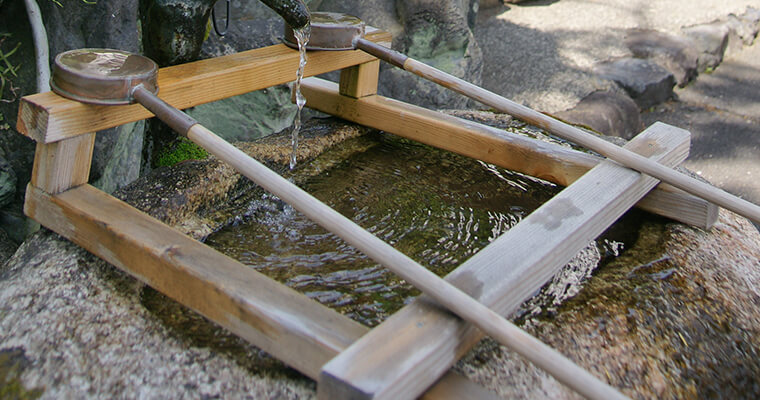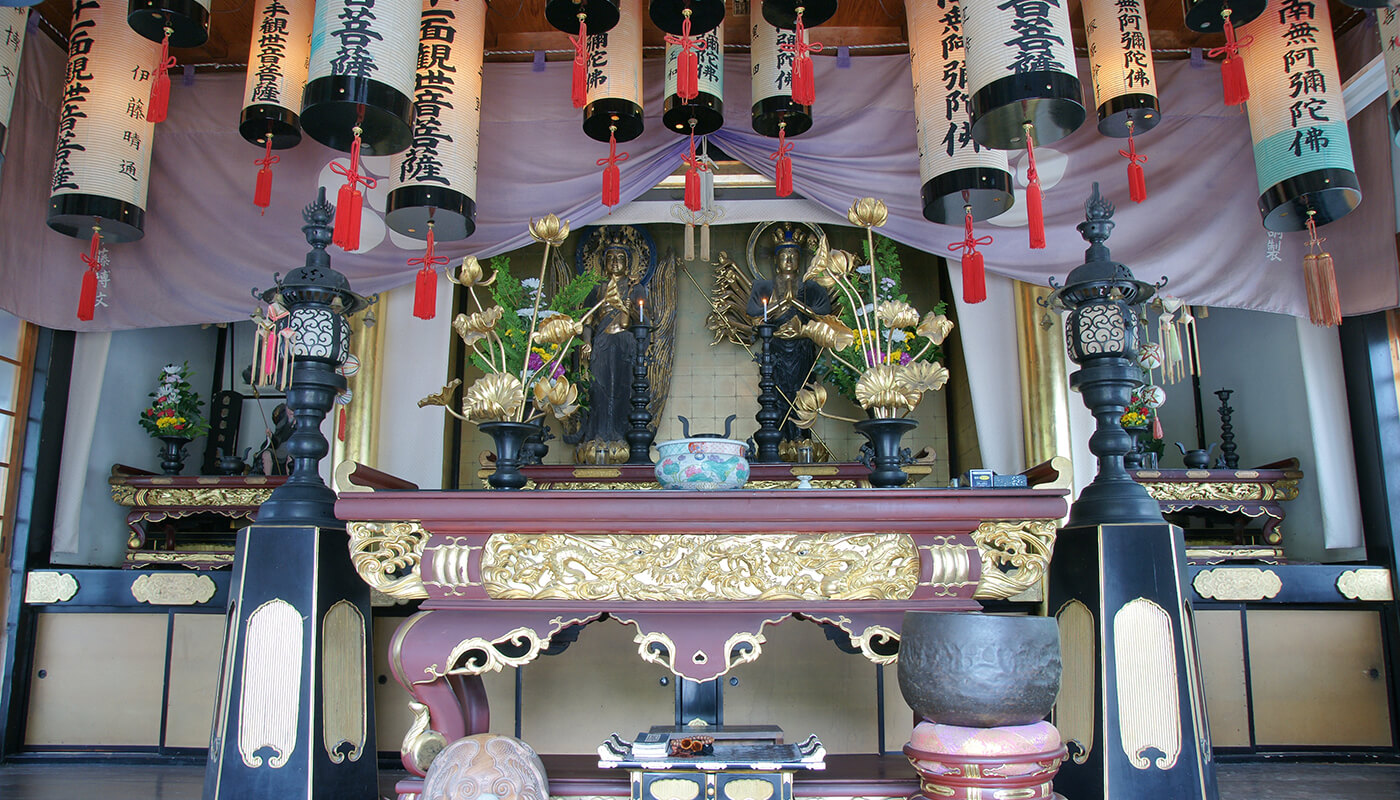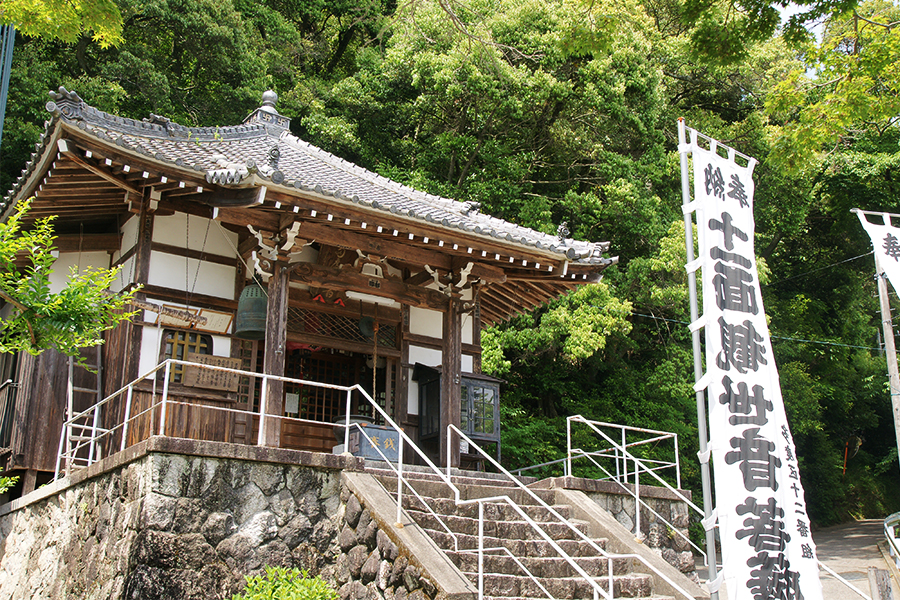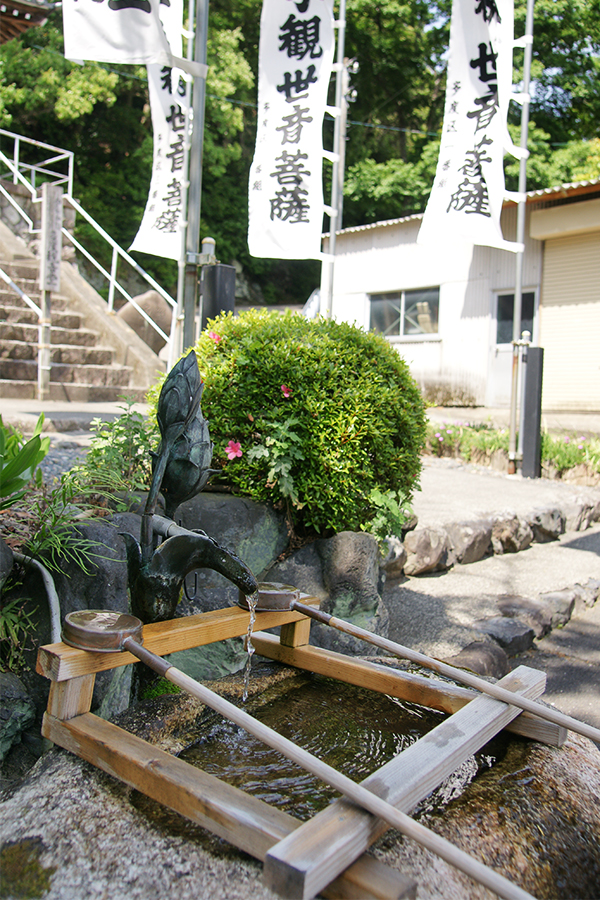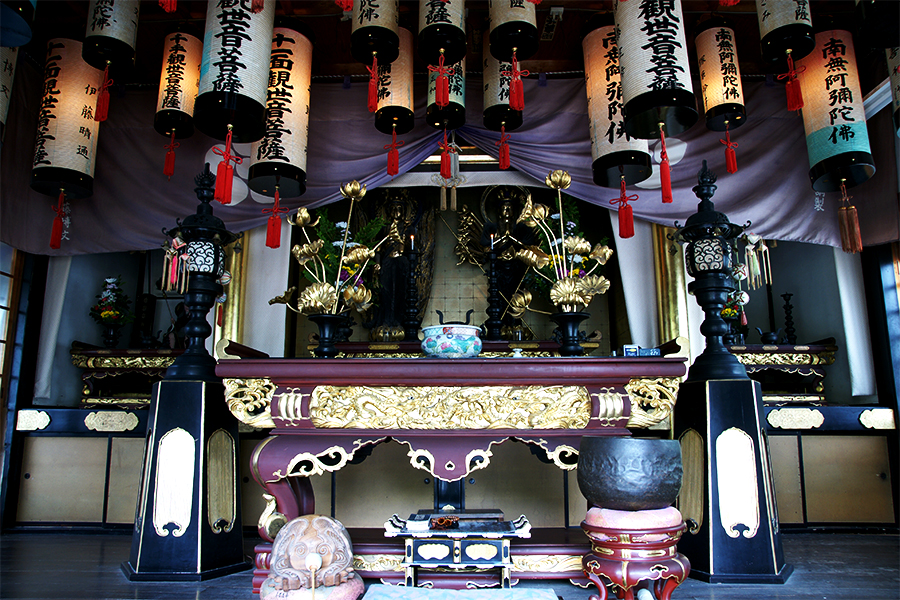Number 33Tadokannon-dō temple
History of the temple
Seiyōzakki
Tadozan Hōun-ji, the main statue is Senju Kannon (Thousand-Armed Kannon), it is a temple number 33 of Ise Saikoku Kannon Pilgrimage.
Washinokura is where I take off my pilgrim’s vest which protected me during the pilgrimage.
The history of Tado Kannon-dō starts in 763, when a monk called Mangan (720-816) built a practice ground in the Washinokura area east of Tado Shrine. He enshrined a 4.85m (15ft10in) high statue of Buddha, prayed and practiced. One night he got a divination from Amatsuhikone, a Shinto god and a 3rd son of Goddess of the Sun Amaterasu, and was told to build a temple. Mangan traveled around the area and gathered donations. When he got enough he went back to Washinokura, built a hall and enshrined Amatsuhikone as a Bodhisattva Tado in it. Soon a bell tower with a bronze bell was donated by a district headman Mizutori Tsukitari, and a three-storied pagoda was founded by Agatanushi Nimaro from Mino province. With these three buildings the basic structure of a Buddhist temple was finished.
In 780 by the order of the Emperor a monk called Hōkyō was chosen to expand the temple. In 781 Hōkyō started a preaching tour to gather donations around four provinces: Ise, Mino, Owari and Shima. Next he built a Lecture Hall and living quarters for monks. Then he gathered ritual objects, tools and other necessary items. The temple started to function properly and soon it received donation in form of rice fields and land. In 839 the Emperor decided to make it a sub-temple of Tendai school. In 849 the temple changed the school to Shingon and was given a name Hōun-ji.
Hōun-ji appears in the 10th Century book about laws and customs Engishiki (Procedures of the Engi Era, 905), which was edited by Fujiwara no Tokihira. It states: Hōun-ji will be treated as a Provincial sub-temple, and there are 10 monks who received the official certificates from the government. The temple grew and flourished. The 16th Century abbot of the temple reported that Hōun-ji consists of more than 70 sub-temples and more than 300 monks live in its precinct. The temple was not only a place of prayer, but also a school for many young monks and a cultural center of the area.
In Kamakura period (1192-1333), between the years of 1211 and 1213, the temple was set on fire by a group of thieves that burst into it. In 1489 due to the Nankai earthquake a landslide occurred at the mountain. As a result Hōun-ji temple was buried in the ground. But according to the records kept by a clan of Tado Shrine priests – the Ogushi clan, the temple was rebuilt and between 1532 and 1555 more than 70 sub-temples operated in its precinct.
Not long after Jōdo Shinshū school Buddhsits from Nagashima started an uprising against the samurai class and especially Oda Nobunaga (later regarded as the first “Great Unifier” of Japan). They even made special prayers at Tado Shrine to curse their enemy. In 1571 Oda Nobunaga’s army led by Shibata Katsuie and Ujiie Naomoto marched in this area and burned all buildings belonging to Tado Shrine and Hōun-ji temple. The temple and the shrine ceased to exist in the end of the 16th Century. Their land was confiscated as a result of Toyotomi Hideyoshi’s (later regarded as the second “Great Unifier” of Japan) nationwide land survey.
In the beginning of 17th Century the daimyo of Kuwana province Honda Tadakatsu (1548-1610) revived the Tado Shrine. In 1617 the next daimyo Matsudaira Sadakatsu (1560-1624) brought an altar of Shinto deity Atago (a protector against fires) from Kakegawa in Tōtōmi province and placed it in the shrine. In 1653 a monk named Ryōshin, the new abbot of Hōun-ji, gathered donations and managed to rebuild the temple. It was placed in Tado Shrine jurisdiction.
At the beginning of Meiji period (1868-1912) Hōun-ji temple was closed due to the new law ordering the separation of Buddhism and Shinto (shinbutsu bunri). A new Kannon Hall was built at the river bank of Ochiba river, a sacred river of Tado Shrine, and two statues of Jūichimen Kannon (Eleven-Faced Kannon) and Senju Kannon (Thousand-Armed Kannon) were enshrined inside. In 1900 due to severe rain fall the Kannon Hall was washed away. In the following year a new smaller hall was built in its place and two surviving statues were once again enshrined inside. In 1905 the current Kannon Hall was rebuilt and new ritual objects were place inside thanks to donations of the worshipers.
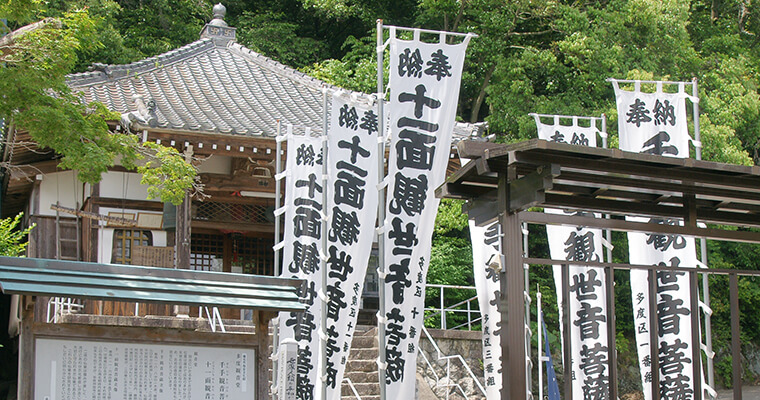
Outline
-
Honorific name
-
Temple's name
Tado Kannon-dō
-
Sect
Shingon
-
Religious service
Jūichimen Kannon
(Eleven-Faced Kannon)
